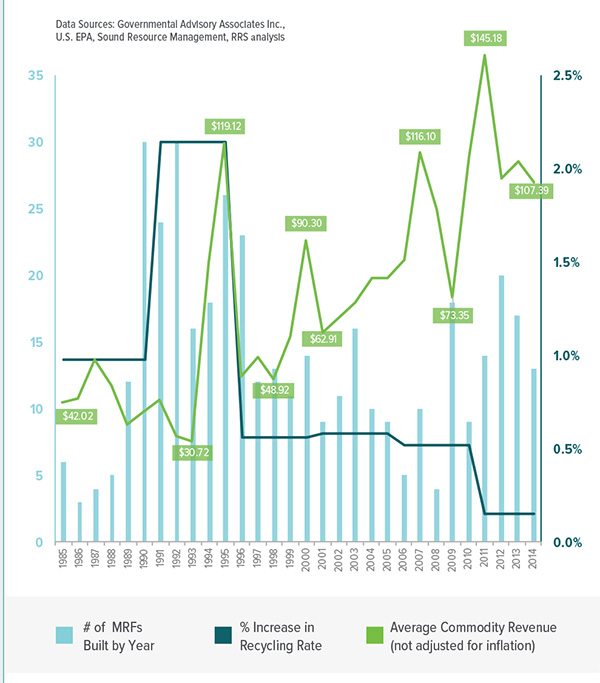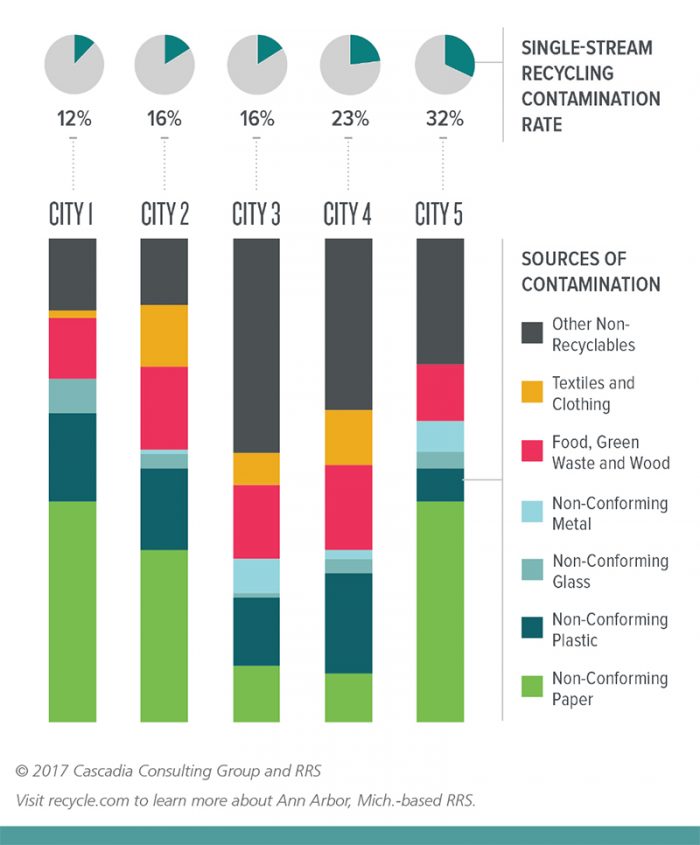
In 2018, an estimated 45.2 billion used cans worth more than $800 million failed to get recovered in the U.S. | fabrikasimf/Shutterstock
The U.S. recycling rate for aluminum cans sits just below 50%, according to an industry group.

In 2018, an estimated 45.2 billion used cans worth more than $800 million failed to get recovered in the U.S. | fabrikasimf/Shutterstock
The U.S. recycling rate for aluminum cans sits just below 50%, according to an industry group.

The U.S. paper recovery rate has been at or above 63% each year for the past decade.
Every year, the American Forest & Paper Association (AF&PA) releases the U.S. paper recovery for recycling rate. The annual figure informs us how much recovered paper is being used to create new products in a given year and is also an important indicator of how much paper and paper-based packaging is kept out of landfills after use.

Consumption of U.S. recovered fiber versus overall finished paper products sold into the market hit a record high percentage in 2018. An industry group explained the increase, which came amid market challenges.
The maps below demonstrate how extended producer responsibility (EPR) programs for packaging have spread around the globe over the last decade, with programs requiring packaging makers to fund recovery systems taking root in a variety of countries.
The maps were provided by Environmental Packaging International (EPI), a consultancy specializing in environmental compliance, product stewardship and sustainability related to packaging and products. EPI, More Recycling and IHS Markit are collaborating to produce a special report exploring the impact of regulations on plastics and analyzing how well the supply of recycled resin is positioned to satisfy demand. To learn more about the project and special report, visit ihsmarkit.com/products/sea-plastics-pathway.html.

This month’s Data Corner is produced by More Recycling. For additional info, go to morerecycling.com.
This article originally appeared in the January 2019 issue of Resource Recycling. Subscribe today for access to all print content.
The U.S. experienced a rapid surge in its recycling rate as capacity increased with the growth of curbside recycling programs and construction of materials recovery facilities in the late 1980s to mid-1990s.
However, the last several years have seen the increases in recycling rate level off and stagnate in a development that parallels recent commodity pricing.
While rising commodity prices will to some degree help drive increased recycling, the trends underscore the need to overcome barriers in areas such as access and resident participation.

Note: Commodity revenue numbers represent average prices for typical curbside recyclables receiving by processing facilities in the Pacific Northwest.
Data Corner is compiled monthly by recycling consultancy RRS. Visit recycle.com to learn more.
This article originally appeared in the May 2017 issue of Resource Recycling. Subscribe today for access to all print content.
Cascadia Consulting Group compiled single-family recycling composition data utilizing studies conducted in the past three years in five western and southern U.S. cities.
The five municipalities all operate single-stream recycling collection and have populations ranging from 600,000 to 2.2 million. The chart below provides a breakout of types and amounts of contaminants, defined as materials not accepted in the programs.
Although contamination rates ranged widely – from 12 to 32 percent – researchers found consistency in terms of material types: non-conforming paper; food, green waste and wood; and other non-recyclables.

Data Corner is compiled monthly by recycling consultancy RRS. For this edition, the company collaborated with Cascadia Consulting.
This article originally appeared in the June 2017 issue of Resource Recycling. Subscribe today for access to all print content.
RRS recently worked with the Washington, D.C. Department of Public Works to research the feasibility of adding curbside compost collection to the municipality’s existing recycling program and identified several economic and environmental benefits.
High participation could be expected if carts were deployed universally, education materials were provided with the cart, and residents were given financial incentivizes to divert waste via a pay-as-you-throw or rewards program.

Data Corner is compiled monthly by recycling consultancy RRS.
This article originally appeared in the January 2018 issue of Resource Recycling. Subscribe today for access to all print content.

